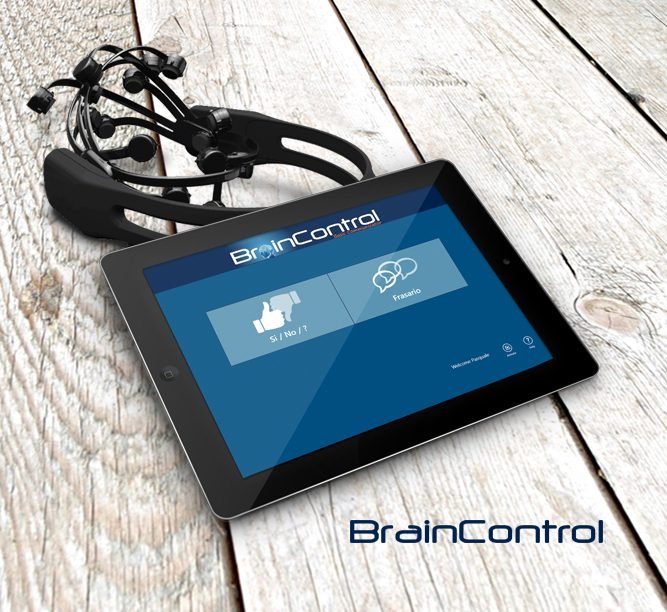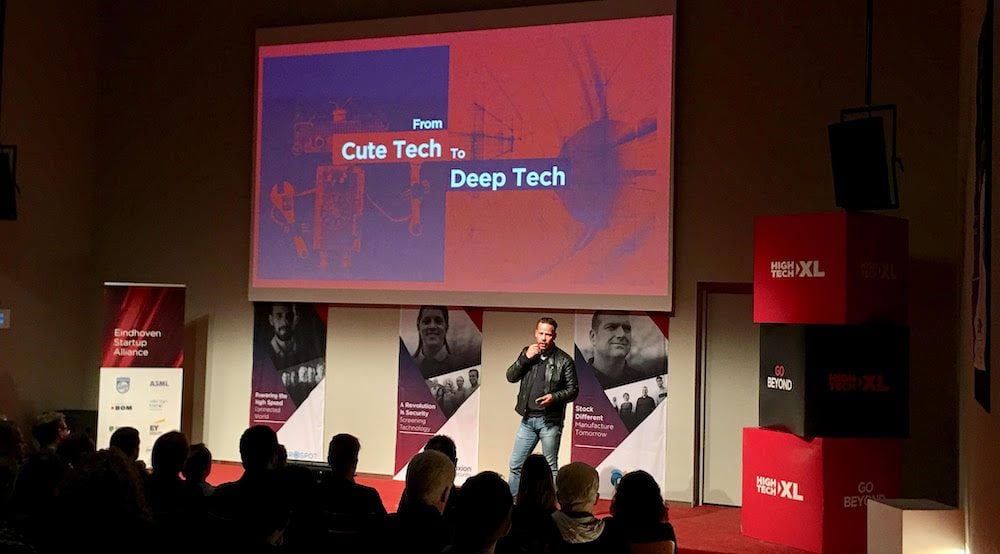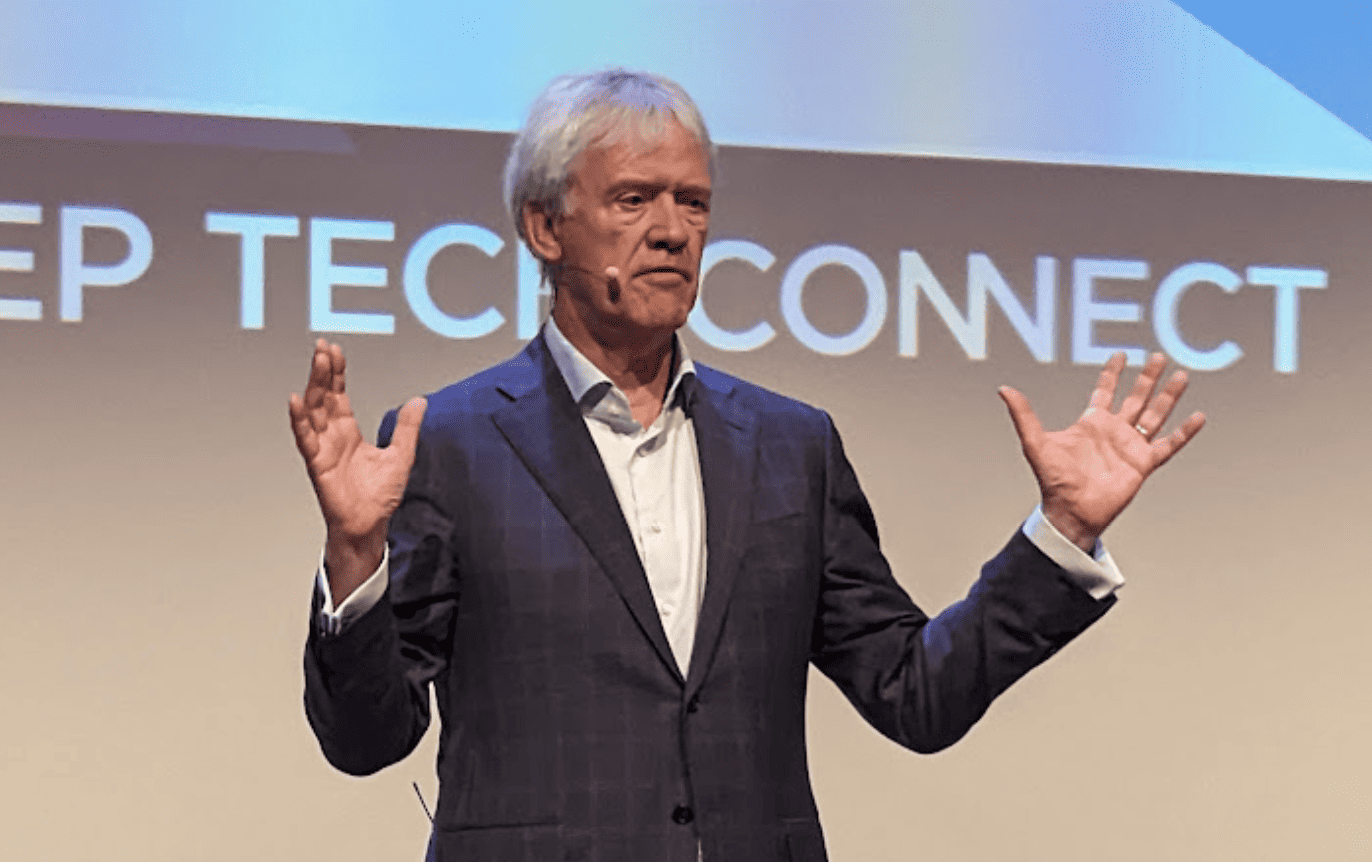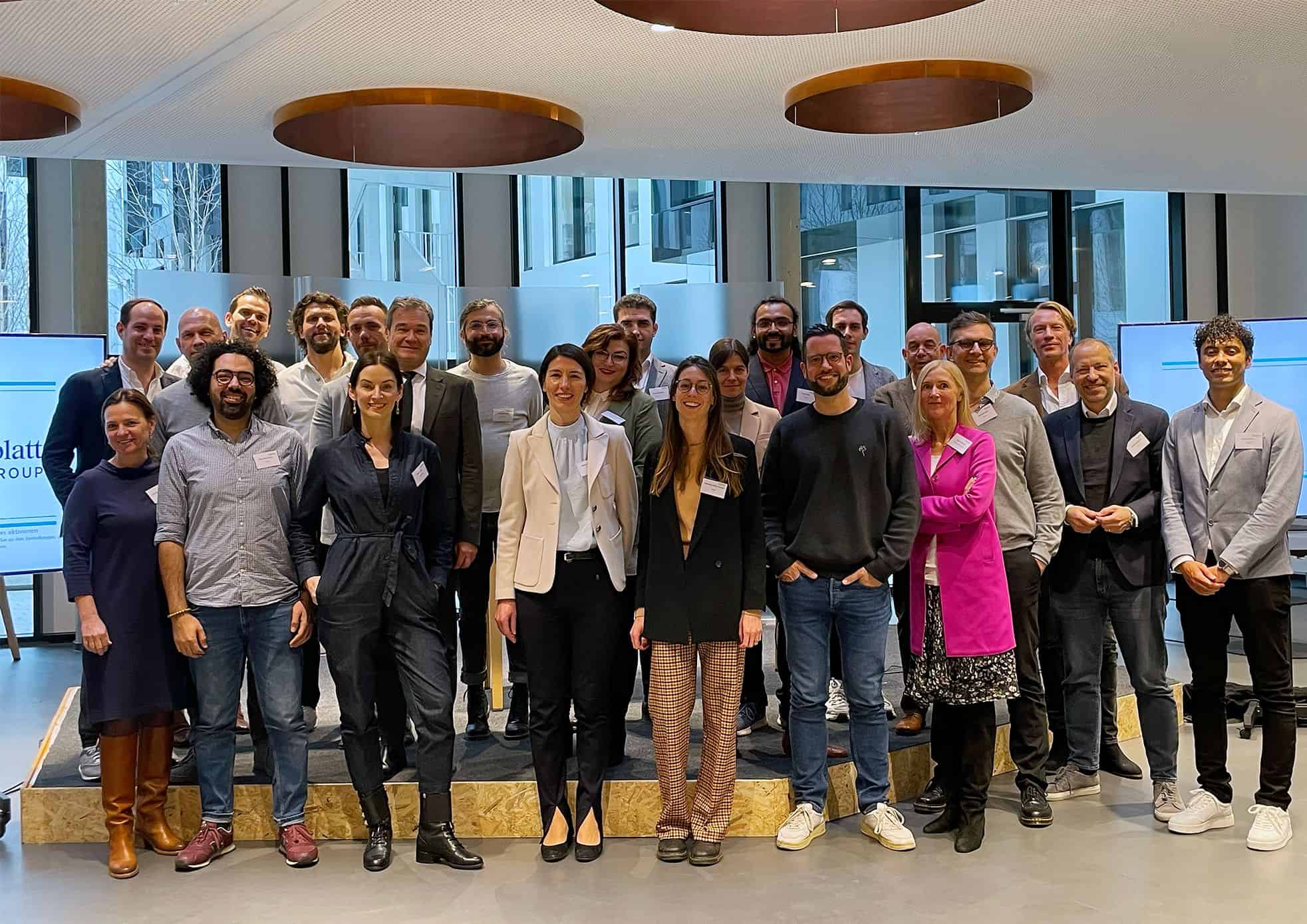
At the High Tech Campus, seven start-ups have been busy with the HighTechXL accelerator program for three months. They are on their way to the XL Day on 6 December, where they can win over future investors. E52 takes a glimpse into the crowd and works towards XL Day with portraits of the start-ups. Today: Liquidweb.
Liquidweb is a start-up from Italy, based in Siena. With their product BrainControl, they make communicating possible for people that suffer from Completely locked-in state, and can’t move any muscle. Completely locked-in state is often a result of a neurodegenerative disease, such as ALS. Software Developer Tommaso Chiantini talks about how the company started: “We started with the development of this product for ALS, because of our CEO, Pasquale Fedele, did research into the pattern of brainwaves. He discovered that you can recognize if someone is thinking about the movement of an object. He wanted to apply this technology to the people that need it the most. There already is a lot of research on this subject, but there isn’t a product on the market to actually help these people.”
Braincontrol is the result of the research, a framework that is based on artificial intelligence, that provides machine interaction through biofeedback. “Our product is like a mental joystick. It allows you to control object, using only your brain. We have an EEG headset, that we buy from a third party, and with our software, we can recognize when someone is thinking about movement.” The pattern recognition is the input that can be used to communicate through a computer. Also, the software can diagnose if someone is cognitive aware. “We ask patients some simple questions and see if he responds correctly. If he responds as we expect, he is cognitive aware.”
“With our software, we give these people a chance to interact again. There is no product on the market right now for these people.”Tommaso Chiantini, Softwaredeveloper LiquidWeb
Chiantini is very passionate about the product the start-up is making. “There are 5 million people in the world with severe disabilities, a fraction of them cannot even move their eyes; how could these people interact again? With our software, we give these people a chance to interact again. There is no product on the market right now for these people.” That the ability to communicate again with another person can be an emotional experience, he proves by showing a video. He shows a father who was communicating with his daughter through a computer, which he wasn’t able to do in a couple of years. “This product can change the lives of those people.” Another example is the first patient of LiquidWeb: “He has had this condition for five years now. We made a training with our software and recognized that he is cognitive aware. The first thing we asked was: ‘if we put up your eyelids, can you see?’ He said yes. It was the first time in five years that he could say something.”
Braincontrol is already used by fourteen patients as of right now, but it’s not an easy product to get acquainted with. “We really have to train the patient to be able to use our product. It sounds easy, thinking about a moving object, but it’s not so intuitive.” That is why the start-up is training patients, if possible before they are completely locked-in. “These patients endure a process of deterioration. First of all, they lose control over some part of their body. After that, it gets worse and worse. With our software, we can follow these patients at every stage, so that are able to communicate in every stage and know how the product works before they are completely locked in.”
The company already has a clear vision of the future and is looking for investors to make it possible. “The development of the first version of the product is finished. In the next version, we want to integrate the control of wheelchair, domotic environment and robotics. We already have working prototypes” After that, LiquidWeb is planning to enter the automotive and IoT market. “These markets are very large, it makes for great possibilities. In five years’ time, we will be surrounded by all things IOT, but how do you interact with this environment? We want to build a platform for that.”







